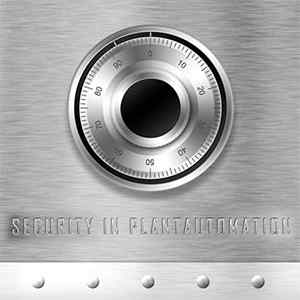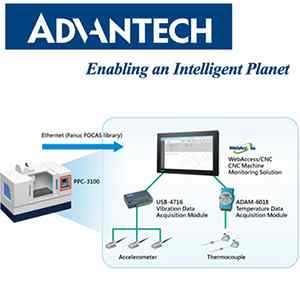Challenges and Solutions in Implementing Industrial Automation

Introduction:
Industrial automation has revolutionized manufacturing and other industrial sectors by improving efficiency, productivity, and safety. However, the journey towards implementing automation is fraught with challenges. Understanding these challenges and exploring their solutions is crucial for businesses aiming to harness the full potential of industrial automation. This article delves into the primary challenges faced during the implementation of industrial automation and offers practical solutions to address them.
Challenge 1: High Initial Costs
Solution: Strategic Investment and ROI Analysis
The initial cost of implementing industrial automation can be prohibitive. This includes the cost of purchasing and installing automated systems, training employees, and maintaining the technology. For small and medium-sized enterprises (SMEs), these costs can be especially daunting.
Solution: To overcome this challenge, businesses should conduct a thorough return on investment (ROI) analysis. This involves evaluating the long-term benefits of automation, such as increased productivity, reduced labor costs, and improved product quality. By comparing these benefits with the initial costs, businesses can make informed decisions. Additionally, phased implementation, where automation is introduced in stages, can help spread out the costs and make the investment more manageable.
Challenge 2: Technological Integration
Solution: Robust Planning and Integration Strategy
Integrating new automation technologies with existing systems can be complex and challenging. This includes ensuring compatibility between different hardware and software components, as well as seamless communication between various systems.
Solution: To address this, businesses should develop a robust integration strategy. This involves working closely with technology providers to ensure compatibility and leveraging industry standards and protocols. Utilizing middleware solutions can also facilitate communication between disparate systems. Thorough testing and validation during the integration process are essential to identify and resolve any issues before full-scale implementation.
Challenge 3: Workforce Resistance
Solution: Employee Engagement and Training
The introduction of automation can lead to resistance from employees who fear job losses or are uncomfortable with new technologies. This resistance can hinder the successful implementation of automation.
Solution: To mitigate this challenge, businesses should focus on employee engagement and training. Transparent communication about the benefits of automation and how it can enhance job roles is crucial. Providing comprehensive training programs to upskill employees and help them adapt to new technologies can ease their concerns. Encouraging a culture of continuous learning and highlighting opportunities for career growth within the automated environment can also foster acceptance and enthusiasm.
Challenge 4: Cybersecurity Risks
Solution: Robust Cybersecurity Measures
As industrial automation relies heavily on interconnected systems and data exchange, it becomes vulnerable to cyber threats. Cyberattacks can disrupt operations, compromise sensitive data, and lead to significant financial losses.
Solution: Implementing robust cybersecurity measures is essential to protect automated systems. This includes using firewalls, encryption, and intrusion detection systems to safeguard data. Regular security audits and updates to software and hardware can help identify and address vulnerabilities. Additionally, training employees on cybersecurity best practices and establishing incident response plans can enhance the overall security posture of the organization.
Challenge 5: Maintenance and Downtime
Solution: Predictive Maintenance and Redundancy Planning
Automated systems require regular maintenance to ensure optimal performance. However, unplanned downtime for maintenance or repairs can disrupt operations and lead to productivity losses.
Solution: Predictive maintenance, which leverages data analytics to predict when maintenance is needed, can minimize unplanned downtime. By monitoring the health and performance of equipment in real-time, businesses can schedule maintenance activities at convenient times, reducing the impact on production. Additionally, implementing redundancy planning, where critical components have backups, can ensure continuous operation even if a system component fails.
Challenge 6: Scalability
Solution: Modular and Scalable Solutions
As businesses grow, their automation needs may change. Implementing a system that can scale with the business is crucial to avoid the need for frequent overhauls.
Solution: Opting for modular and scalable automation solutions allows businesses to expand their automation capabilities incrementally. This involves selecting technologies and systems that can be easily upgraded or expanded as needed. Cloud-based solutions can also offer scalability, enabling businesses to adjust their automation infrastructure based on current demands without significant upfront investments.
Challenge 7: Data Management
Solution: Effective Data Management Strategies
Industrial automation generates vast amounts of data, which can be overwhelming to manage and analyze. Proper data management is essential to harness the full potential of automation.
Solution: Implementing effective data management strategies is crucial. This includes establishing clear protocols for data collection, storage, and analysis. Utilizing data analytics tools can help businesses extract valuable insights from the data, driving informed decision-making. Ensuring data accuracy and integrity through regular audits and validations can enhance the reliability of the data-driven processes.
Challenge 8: Compliance and Regulations
Solution: Staying Informed and Proactive Compliance
Industries are subject to various regulations and standards that must be adhered to. Compliance with these regulations can be challenging, especially when implementing new technologies.
Solution: Staying informed about relevant regulations and proactively ensuring compliance is essential. This involves working closely with regulatory bodies and industry experts to understand the requirements. Implementing compliance management systems can streamline the process and ensure that all aspects of automation meet regulatory standards. Regular audits and reviews can help identify and address any compliance gaps.
Challenge 9: Vendor Dependence
Solution: Vendor Diversification and Strong Partnerships
Relying heavily on a single vendor for automation solutions can lead to issues if the vendor faces challenges or if the relationship sours. Vendor dependence can also limit the flexibility of the automation system.
Solution: Diversifying vendors and establishing strong partnerships with multiple suppliers can mitigate this risk. This involves evaluating and selecting vendors based on their reliability, support services, and the flexibility of their solutions. Building strong relationships with vendors can ensure better support and collaboration, which is crucial for successful automation implementation.
Challenge 10: Rapid Technological Advancements
Solution: Continuous Learning and Adaptation
The pace of technological advancements in industrial automation is rapid. Keeping up with the latest technologies and trends can be challenging but is essential to remain competitive.
Solution: Promoting a culture of continuous learning and adaptation within the organization is crucial. Encouraging employees to stay updated with the latest developments through training, workshops, and industry conferences can help businesses stay ahead. Investing in research and development (R&D) to explore and integrate new technologies can also ensure that the automation systems remain state-of-the-art.
Conclusion:
Implementing industrial automation presents several challenges, but with strategic planning and proactive solutions, businesses can successfully navigate these obstacles. By addressing the high initial costs, ensuring seamless technological integration, engaging the workforce, implementing robust cybersecurity measures, and focusing on maintenance, scalability, data management, compliance, vendor diversification, and continuous learning, businesses can harness the full potential of industrial automation. Embracing these solutions will not only enhance productivity and efficiency but also position businesses for long-term success in an increasingly automated industrial landscape.






